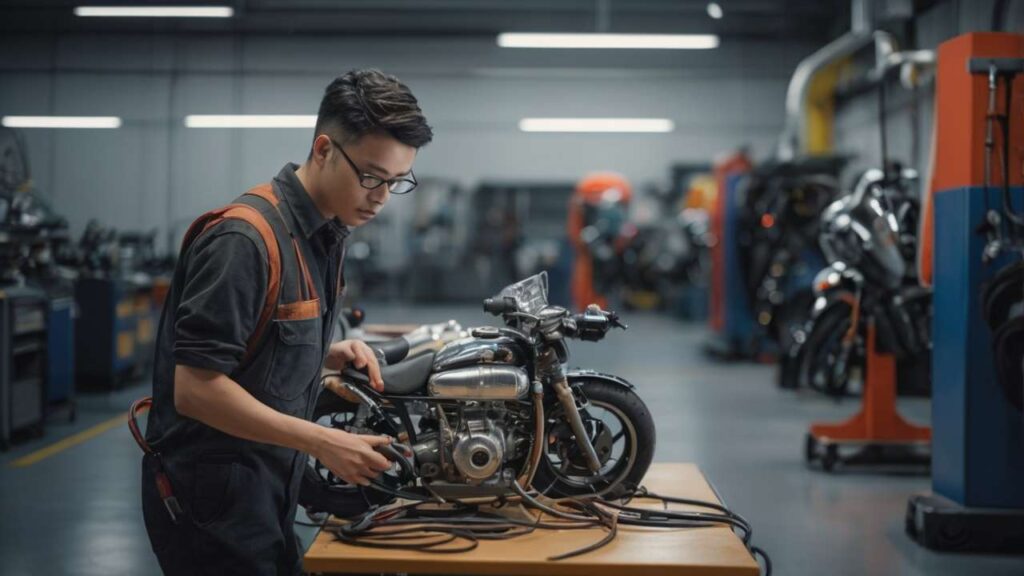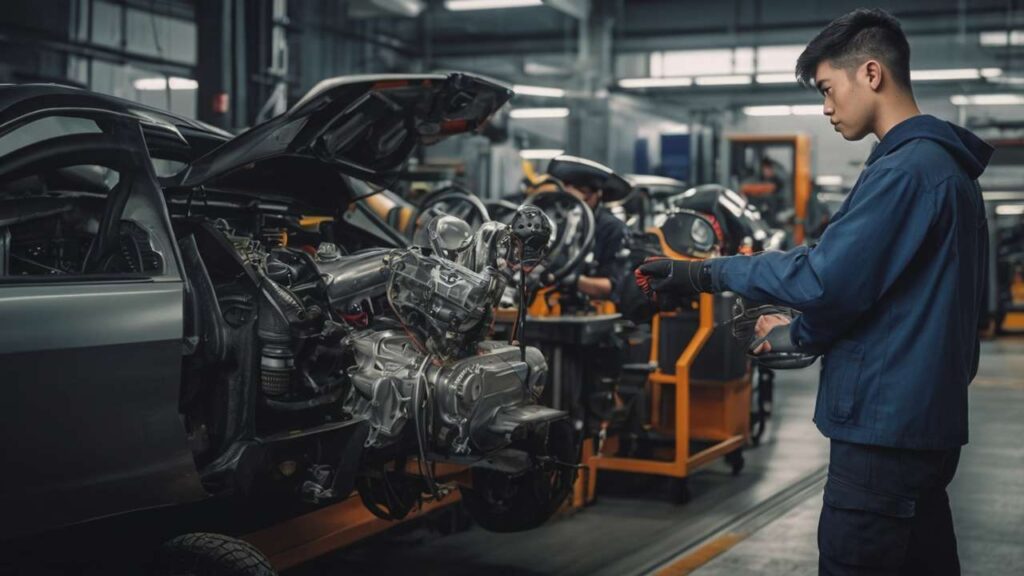It’s easy to ignore small sounds from your car, especially if you’re rushing to work or already used to its little quirks. But brake issues? That’s one area you should never put off. The early warning signs of brake trouble are often subtle at first—just a squeak, a little vibration, or a pedal that feels softer than usual. Yet, if neglected, these symptoms can snowball into dangerous failures and expensive repairs. I’ve seen neighbors in Raleigh spend double the usual repair cost simply because they “waited for the grinding noise” before visiting a professional.
Trusted specialists always say the same thing: listening early and acting quickly can save your life and your wallet. As North Carolina brake service experts remind us, your vehicle’s stopping system is not just about convenience—it’s your number one safety tool. And honestly, if you’ve ever tried to drive with spongy brakes down a mountain road near Asheville, you’ll know how terrifying it feels.
So let’s dig into the early warning signs of brake trouble, what they mean, and how you can take smarter steps before small issues become major headaches.
Squeaking and Squealing: Not Every Noise is Bad
Almost every driver has heard that sharp squeal when pressing the brake pedal. Sometimes it happens in the morning, especially after rain or humidity. That’s often just surface rust on the rotors wearing off, and it usually disappears after a few stops. But if the squeak persists, or if it’s coming from a consistent spot each time, you might be hearing the brake pad’s wear indicator tab.
This tiny piece of metal is designed to rub against the rotor once your pads are thin, producing a high-pitched squeal that tells you it’s time for replacement. Ignore it, and you’ll quickly slide into more serious brake trouble.
A friend of mine thought squeaks were “just normal old-car sounds” and drove for months without checking. By the time he got to a mechanic, the pads were gone and the rotors were deeply scored. A simple pad change (maybe $150) became a full rotor replacement (closer to $600). That’s exactly the kind of escalation experts try to prevent.
Grinding: The Sound You Should Never Ignore
Grinding is the sound of metal-on-metal contact—no cushioning pad left, just bare caliper pressing directly against the rotor. It’s as bad as it sounds. At this point, your stopping power is drastically reduced, the rotor surface gets gouged, and the repair cost skyrockets.
According to a professional technician I once spoke with, “If you’re hearing grinding, your brakes are not just worn, they’re failing.” He explained how a grinding rotor often requires machining or full replacement, and in extreme cases, the caliper piston itself gets damaged from overextension.
In the main article about common brake problems, grinding is highlighted as the clearest red flag—but drivers should never wait for it. Catching squeals early is smarter, safer, and much cheaper.
Soft or Spongy Brake Pedal
Ever pressed your brake pedal and felt like it’s sinking too far or feels mushy instead of firm? That’s what professionals call a “spongy pedal.” It often means there’s air in the brake line, which reduces hydraulic pressure. But it can also be a symptom of a brake fluid leak, or worse, a failing master cylinder.
Brake fluid, as discussed in Brake Fluid 101: The Unsung Hero of Your Vehicle’s Stopping Power, isn’t something drivers often think about, but it’s essential. Without proper pressure, even the best pads and rotors can’t stop your car effectively. I once had to top off fluid every two weeks before realizing there was a small leak near the wheel cylinder. It was a cheap fix early, but left unchecked, it could have caused a full brake failure.
Pulling to One Side
If your car pulls left or right every time you brake, that’s another subtle warning. This pulling can be caused by uneven caliper pressure—where one caliper clamps harder than the other—or by a collapsed brake line.
I remember test driving an old pickup for sale in Durham. Every time I braked, it tugged left. The seller claimed it was just “alignment,” but the mechanic inspection showed one seized caliper. That difference in pressure meant the truck would never brake straight, especially in an emergency. Situations like this remind us why a professional brake inspection in North Carolina is always worth the small cost.
Vibrations in the Steering Wheel or Pedal
Warped rotors are sneaky. At first, you may only feel a faint vibration in the brake pedal, or your steering wheel might shudder lightly when braking at highway speeds. Many drivers mistake this for tire balance issues, but it’s often uneven rotor surfaces causing the pads to slip.
Fixing warped rotors can sometimes involve resurfacing with a lathe, though replacement is often recommended for reliability. The key here is not to dismiss those subtle vibrations. They’re your car’s way of saying: “I’m not stopping as evenly as I should.”
Why Early Action Saves More Than Money
The cost of waiting can be brutal. In The Cost of Waiting: How Ignoring Brake Issues Can Empty Your Wallet, the financial breakdown is clear. Pads are cheap, rotors are manageable, but once you damage calipers, master cylinders, or brake lines, the bill climbs fast. More importantly, delaying puts you and your passengers at risk.
DIY repairs might seem tempting, and some basic pad replacements are doable for those with tools and time. But as DIY vs. Pro: Why Brake Repair is Best Left to North Carolina’s Experts explains, mistakes with brakes aren’t like mistakes with spark plugs. Brakes don’t forgive errors. Trusting a reliable, experienced specialist ensures not just proper installation but also full system inspection for hidden issues.
Expanding Your Knowledge: Beyond the Basics
Understanding the early warning signs of brake trouble is step one. But modern braking systems are more complex than most realize. Some vehicles use disc brakes all around, while others still use drum brakes on the rear wheels. As Disc Brakes vs. Drum Brakes: Understanding Your Vehicle’s Braking System shows, each type has unique maintenance needs.
Future guides will also explore advanced topics like anti-lock braking system (ABS) sensors, common electronic brake control module failures, and even the role of regenerative braking in hybrid and electric vehicles. Drivers are hungry for clear, trustworthy advice that connects these technical details to everyday driving safety.
A Real-Life Case Study: From Vibration to Safety
One of the best examples I’ve seen was a family minivan in Greensboro. The driver noticed slight pedal vibration but ignored it for months. Finally, during a holiday trip, the brake pedal sank almost to the floor while driving through the mountains. Luckily, they got it stopped safely and had it towed. The inspection showed air in the line, severely worn pads, and rotors that were warped beyond saving. The repair bill? Nearly $1,200.
Had they acted at the first vibration, they could have solved the issue with new pads and a fluid bleed for under $250. It’s a classic reminder: brakes don’t fix themselves, they only get worse.
The early warning signs of brake trouble—squeaks, grinding, spongy pedals, pulling, and vibrations—are like your car whispering before it starts screaming. Listening early means cheaper repairs, safer driving, and less stress. As experts at ProServiceTips emphasize, proactive care beats reactive panic every time.
For reliable service, insights, and more detailed breakdowns, explore our full Brake Services category. And if you’re in North Carolina, don’t hesitate to reach out to the top-quality brake specialists near you.
FAQs
1. How often should brake pads be replaced?
Most pads last 30,000–70,000 miles, but it depends on driving habits, terrain, and vehicle type. Regular inspections are key.
2. Can I drive with squeaky brakes?
Occasional squeaks after rain are normal, but persistent squealing likely means worn pads. Ignoring it risks rotor damage.
3. Is brake fluid replacement really necessary?
Yes. Old fluid absorbs moisture, reducing stopping power. Most manufacturers recommend replacement every 2–3 years.
👉 If this article helped you spot brake trouble early, share it on your social media using the buttons below. You might just save a friend from a dangerous—and costly—mistake.


